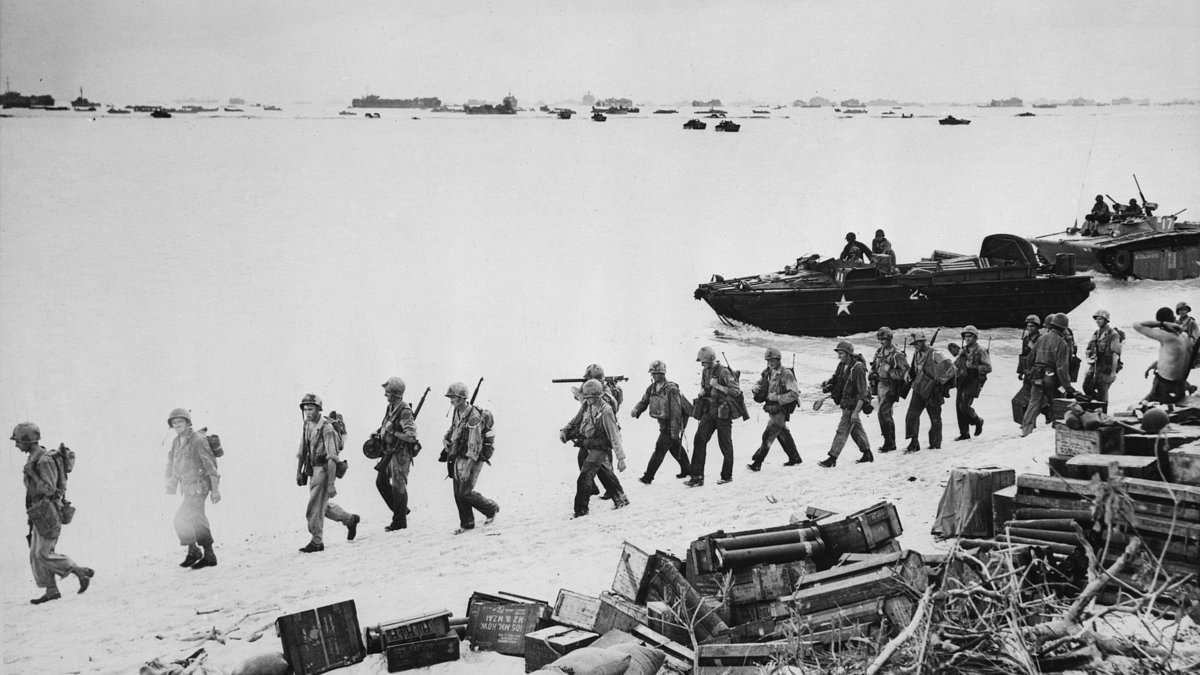The tiny island where Julian Assange pleaded guilty to one count of espionage has a dark and bloody history which involved the deaths of thousands during a brutal battle in World War II between American and Japanese forces.
Towards the end of that battle, thousands of the isolated Japanese soldiers and civilians remaining in Saipan, chose to take their own lives by leaping from a cliff in the northern section of the island.
Assange’s legal team were able to negotiate with the Department of Justice to use a courtroom in Saipan, located in the Northern Mariana Islands in the south Pacific, as the location for the plea because it is a US territory.
His lawyers felt Assange would be safer there thanks to its proximity to the Wikileaks founder’s homeland of than he would be on the US mainland.
The island has a history of strategic importance. In the days after D-Day in 1944, with the Axis powers reeling, the US military sought to liberate Saipan from the Japanese Empire and use it as a launching pad for bombing missions in the region.
The island had been under the control of Spain since the 17th century up until the conclusion of the Spanish-American war in 1898, at which point it was occupied by the US briefly who sold it to Germany shortly afterwards.
In 1914, the Japanese empire took control of the region with the approval of the United Kingdom, then an ally, in order to weaken Germany.
Just hours after the attack on Pearl Harbor in December 1941, Japanese forces sought to consolidate its position in the region
by launching a bomb attack on US forces in Guam, an attack that was launched from Guam.
Then on June 15, 1944, the US military began to invade Saipan. The island was to be used as the home of the B-29 Superfortress bomber that would hit Japan’s mainland.
Battleships pounded the coastline as bombers descended on Japanese defense structures, launching from the USS Enterprise, in addition around 70,000 Marines landed on Saipan to slug it out against their Japanese counterparts.
The commander of the ground forces at Saipan was Marine Corps Lt. Gen. Holland M. Smith, dubbed ‘Howling Mad’ for his volcanic temper.
A week into the battle, Smith relieved the 27th’s commander, Maj. Gen. Ralph Smith (no relation), after the division lagged behind the Marine units operating on its flanks.
The Marine commander not only blasted the 27th’s leadership, but he also openly criticized its soldiers in front of war correspondents, who later reported on the rift that became known as ‘Smith vs. Smith.’
Battle sites were nicknamed ‘Death Valley’ and ‘Purple Heart Ridge’ by the entrenched soldiers.
The battle resulted in the deaths of around 25,000 people.
At least 5,000 of those Japanese forces killed died as a result of suicide to avoid capture in the northern part of the island where they had been isolated.
The US flag was raised over Saipan on July 9, 1944.
The judge who accepted Assange’s plea, US District Court Judge Ramona Manglona, made reference to the brutal battle and how the island had just recently commemorated it.
‘I would just note to you that this past week the island has been celebrating 80 years of peace since the Battle of Saipan. This was a very bloody place for Japanese and Americans,’ Mangola told Assange.
‘We’ve been celebrating a peace here with a former enemy. And now there’s some peace that you need to restore yourself when you walk out and pursue your life as a free man.’
Local historian Don Farrell told the Saipan Tribune this month that Admiral Richmond Kelly Turner who oversaw the invasion referred to the island as a ‘real nutcracker.’
‘The Battle for Saipan was one of the most difficult, most creative battles the United States ever fought,’ Farrell said.
As a result of a 1975 referendum on becoming a US territory, the island was afforded a representative in Congress and residents became American citizens.
They cannot vote in presidential elections nor can their member of Congress propose laws.
Chinese tourists are allowed to enter Saipan without visas, something that isn’t afforded to citizens of the Communist country elsewhere in the US.
Lawmakers have long sought to close that loop hole due to national security concerns.
